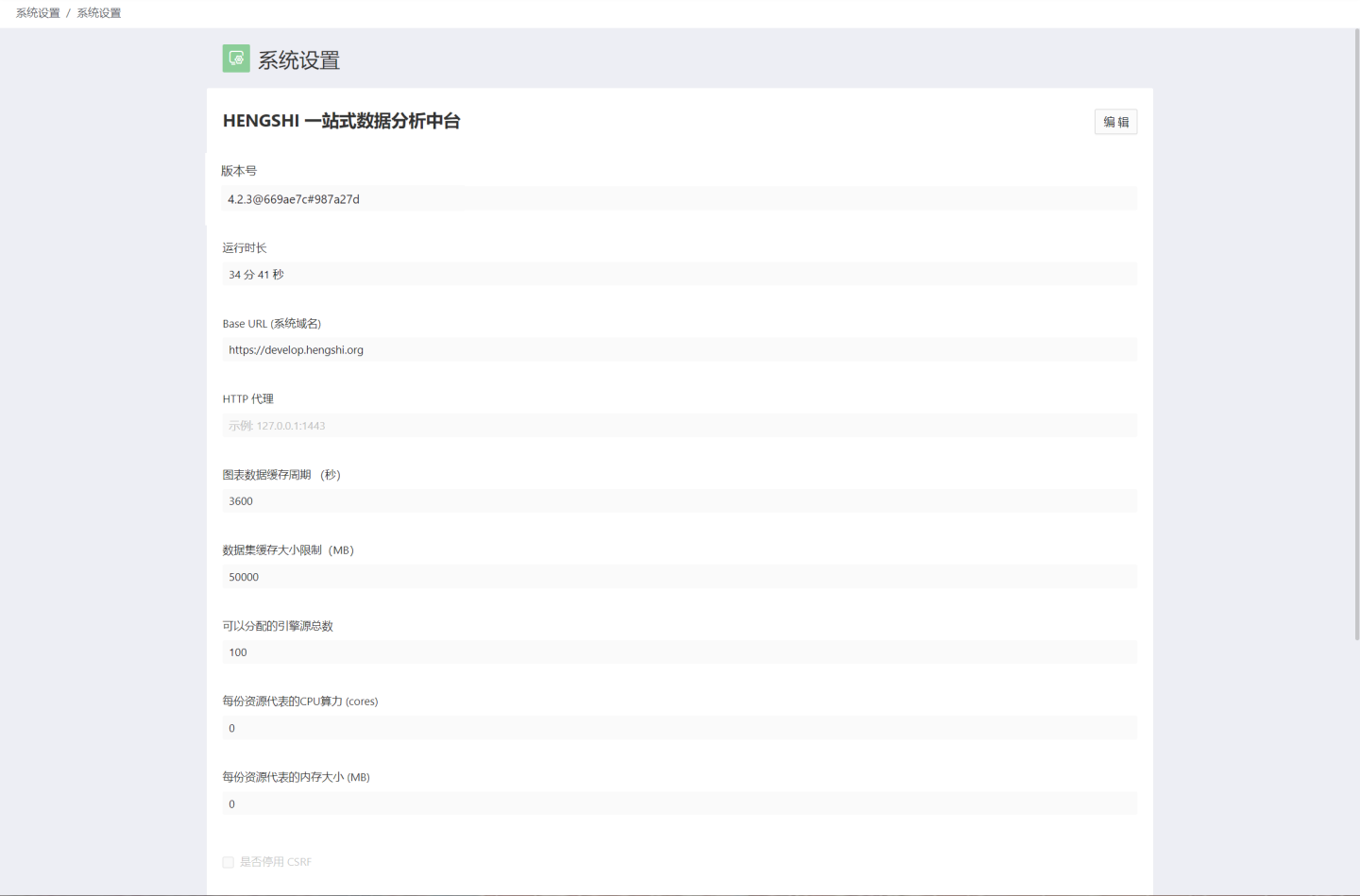System Settings
The HENGSHI system settings display some parameters during system runtime, including information related to the main program, Base URL, HTTP proxy, chart data cache cycle, dataset cache size, tenant engine, and other related information.

Main Program
The system settings display information related to the main program, which is automatically generated by the system and not modifiable.
- Version: The version of the main program.
- Uptime: The uptime of the main program.
Base URL
The root path for accessing this system, which plays an important role in Login Authentication and is the address used by other systems to callback this system.
Example: If you access this system via http://demo.abc.com, then http://demo.abc.com is the Base URL of this system. If deployed under a secondary path /analytics, accessed via http://demo.abc.com/analytics, then http://demo.abc.com/analytics is the Base URL of this system.
Chart Data Cache Cycle
The chart data cache cycle refers to the period during which chart data for each query is read from the cache. The default is 3600 seconds, or 1 hour. This means that chart data is stored in the cache for 1 hour, and when the cache cycle is exceeded, the system refreshes the data.
This configuration item affects all applications within the system. However, since different applications have different data update requirements, using a unified configuration can lead to some applications updating data slowly and others quickly, unable to accommodate all applications. Therefore, each application can set its own Chart Data Cache Cycle in the application settings as needed, after which the application will not be affected by the overall configuration.
If you want to obtain real-time data during editing instead of reading from the cache, you can click the Refresh button on the dashboard page or chart page. In API calls, you can add the parameter refresh=true to the URL to get the latest data.
Dataset Cache Size Limit
When the dataset acceleration engine is enabled, the dataset size is checked. If the dataset size exceeds this configuration item, the dataset does not support enabling the acceleration engine.
Tenant Engine
When the tenant engine feature is enabled in the system, the following configuration is required.
Total number of engines that can be allocated: The number of engines that can be allocated, with a default of 100. Currently, modification is not supported.
CPU computing power (cores) represented by each resource: The number of cores represented by each resource, where cores refer to the available CPU core count. For example, if the system has a total of 100 CPUs, and each resource represents 0.1 CPU cores, when a tenant has 1 resource, it means the tenant can use 6 seconds of one CPU, while the other 99 CPUs are unavailable. Additionally, the tenant can occupy CPU time for 60 seconds * 0.1 = 6 seconds per minute.
Memory size (MB) represented by each resource: The amount of memory that can be used by each resource.